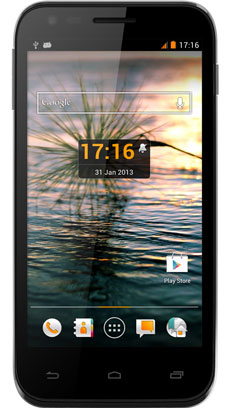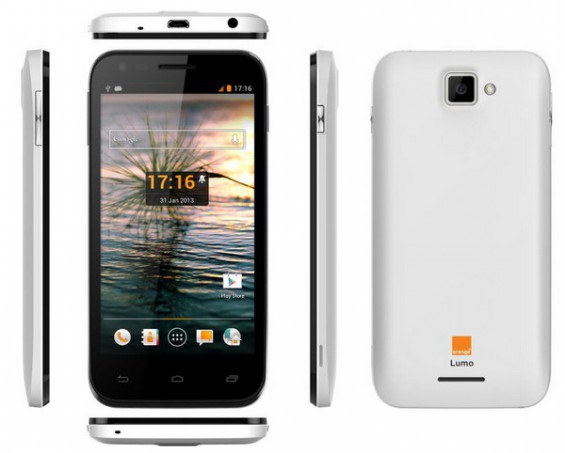Ice Cream Sandwich or Jelly Bean: Which is the Preferred Android Platform?-refurbished phones cheap..
- March 1, 2013 By Mylan Cellular
Android is by far the most popular operating system of the contemporary mobile market in terms of sales and user base. In an attempt to provide the newest and most improved app experience to the existing and potential target audience, Google releases updated versions of its OS platform frequently. Ice Cream Sandwich and Jelly Bean are the newest versions of Android available for use on smartphones.
Though the names of the updated Android platforms generally attract a larger user base, they do not provide us any idea about the features and functionalities of the operating systems. Mostly, mobile users assume that the latest Android version will be free of bugs and will also have slick additional features. But is it necessary for users to update to the latest version, in spite of the fact that he/she is a non technical person and does not have to access technological features very often? Here we study the comparison of the latest versions of the Android operating system, the Ice Cream Sandwich and the Jelly Bean, to help you decide your choice among the two.
Ice Cream Sandwich and Jelly Bean: What Has Not Changed
Firstly, it is important to know the version numbers of both Ice Cream Sandwich and Jelly Bean. The former is Android 4.0, while the latter has two updates 4.1 and 4.2. As the numbers suggest, there has been only a moderate upgradation from Ice Cream sandwich to Jelly Bean. The feel and look of Androids 4.1 and 4.2 are quite similar to that of Android 4.0. The app icons used in both Ice Cream Sandwich and Jelly Bean are completely identical. However, minor changes have been introduced in the status bar and the dock appearing at the top and bottom of mobile device screens respectively. Since there is hardly any change in the behavior of mobile applications as part of both versions of the Android operating system, the number of Android users who upgraded to the latest version is rather small. Till December 2012, mere 6.7 percent users started using the Jelly bean version of Android.
Ice Cream Sandwich and Jelly Bean: What is New
According to mobile market researchers, Jelly Bean operates faster on mobile devices when compared to Ice Cream Sandwich. The apps open fast and the web pages also take less time to load on Jelly Bean. The enhanced technology which has been used to build the graphic features of Jelly Bean helps in improving the time of display on the mobile device screen. Rearrangement of icons and widgets on the device home screen is also easier with Jelly Bean. Moreover, a user can resize the widgets as per his/her choice by just dragging them. The most important introduction as part of Jelly Bean is Google Now. This feature behaves like a personal assistant, managing one's settings on the Google searches and fixing appointments, weather, or flight departure schedules. Jelly Bean has also been provided with the ‘cards' option that helps a user get access to information relevant to his/her searches throughout the day.
To conclude, upgradation to Jelly Bean is not necessary, but can be undertaken by users who use lots of applications, take several photos, or watch videos all day long. The only problem here is that not every Android device runs the Jelly Bean version.
Though the names of the updated Android platforms generally attract a larger user base, they do not provide us any idea about the features and functionalities of the operating systems. Mostly, mobile users assume that the latest Android version will be free of bugs and will also have slick additional features. But is it necessary for users to update to the latest version, in spite of the fact that he/she is a non technical person and does not have to access technological features very often? Here we study the comparison of the latest versions of the Android operating system, the Ice Cream Sandwich and the Jelly Bean, to help you decide your choice among the two.
Ice Cream Sandwich and Jelly Bean: What Has Not Changed
Firstly, it is important to know the version numbers of both Ice Cream Sandwich and Jelly Bean. The former is Android 4.0, while the latter has two updates 4.1 and 4.2. As the numbers suggest, there has been only a moderate upgradation from Ice Cream sandwich to Jelly Bean. The feel and look of Androids 4.1 and 4.2 are quite similar to that of Android 4.0. The app icons used in both Ice Cream Sandwich and Jelly Bean are completely identical. However, minor changes have been introduced in the status bar and the dock appearing at the top and bottom of mobile device screens respectively. Since there is hardly any change in the behavior of mobile applications as part of both versions of the Android operating system, the number of Android users who upgraded to the latest version is rather small. Till December 2012, mere 6.7 percent users started using the Jelly bean version of Android.
Ice Cream Sandwich and Jelly Bean: What is New
According to mobile market researchers, Jelly Bean operates faster on mobile devices when compared to Ice Cream Sandwich. The apps open fast and the web pages also take less time to load on Jelly Bean. The enhanced technology which has been used to build the graphic features of Jelly Bean helps in improving the time of display on the mobile device screen. Rearrangement of icons and widgets on the device home screen is also easier with Jelly Bean. Moreover, a user can resize the widgets as per his/her choice by just dragging them. The most important introduction as part of Jelly Bean is Google Now. This feature behaves like a personal assistant, managing one's settings on the Google searches and fixing appointments, weather, or flight departure schedules. Jelly Bean has also been provided with the ‘cards' option that helps a user get access to information relevant to his/her searches throughout the day.
To conclude, upgradation to Jelly Bean is not necessary, but can be undertaken by users who use lots of applications, take several photos, or watch videos all day long. The only problem here is that not every Android device runs the Jelly Bean version.
For discount cell phones, used cell phones and refurbished cell phones as well as new and used tablets. Please visit our online store.


